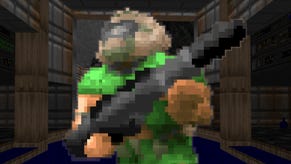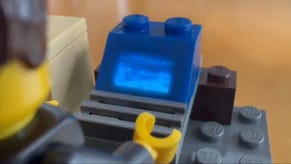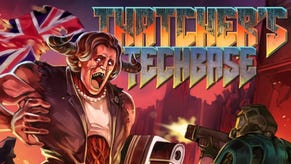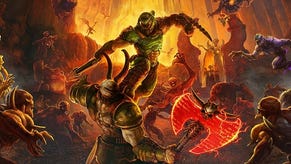DOOM
Like a fine wine.
Almost every time we post a review of a new release on Xbox Live Arcade, someone inevitably pipes up "what's the point?" - as though old games are somehow exempt from re-evaluation. The attitude seems to be that Microsoft has the right to release anything regardless of quality as long as it's cheap, or that it's somehow 'unfair' to judge an old game. What nonsense. If Microsoft - or Sony, or Nintendo - wants to charge good money for ancient content, we're here to tell you whether it's worth the asking price, whether it's boxed product or otherwise.
Quick review? Doom is definitely worth the asking price.
Unlike a lot of games that came out at the start of that difficult transition from 2D to 3D, Doom stands the test of time thanks to fantastic, memorable level design, a refined control system, a perfect weapon balance, the list goes on. When Bungie spoke of basing Halo on the "30 seconds of fun over and over" design ethic, it was a principle Doom got right from the opening level onwards.
Having gone on my own personal trip down memory lane, playing it on 360 over the past few days has been one of the few escapades into nostalgia that I've emerged from appreciating the game more than I did then. Playing Doom reminds you of so many things that even modern shooters (Quake IV, anyone?) don't realise the importance of. Secrets being one of the main elements.
Mars attack
As any hardened Doom veteran will tell you, you haven't really played the game until you know its secrets - yet so few first-person shooters even bother with them these days. Sure, you can rip through each level in no time, but there's something immensely satisfying about knowing where to find the chainsaws, rocket launchers, partial invisibilities and computer area maps. Often, without them, the game's a whole lot tougher to play, forcing you to duke it out with hugely powerful enemies without the necessary kit.
Doom even includes the little things, like being able to see the downed corpses of your victims scattered around the play area. Things like this tend to be continually overlooked as developers go for glitz over what gamers want. Doom had this in 1993 for gawd's sake. It was also one of the first games of its type to favour the 'save anywhere' ethos - something that it retains, thus allowing you to chip your way through all four episodes at your leisure.
Doom also has atmosphere in spades. Even in the harsh next generation light of 2006, the game sends a chill down your spine when you're wading through the twisting dimly lit mazes, all-too aware of the gurgling imps just around the corner, or anticipating the consequences of flicking a switch. And despite the hilariously blocky bitmapped visuals and rudimentary animation, there's something incredibly stylish about the character design. Limited animation or not, the style is as etched in the gamer's consciousness as Pac-Man or Mario. Just as 2D retro has almost become an art style of its own to cherish and wear proudly on t-shirts, Doom represents 3D retro in just as powerful a way. Seeing it again, and playing through it all over again is a remarkable experience that's actually miles better than you thought it would be. You'll quickly realise just how far ahead of its time it really was, and how in many ways, this particular style of first-person shooter was never bettered - even by id themselves 11 years later.
Durr, da da da DURR, da da da DURR di-di-di-di-di-di di-di
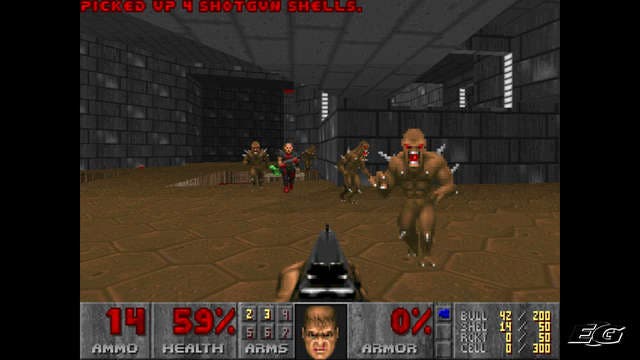
Even the stupid burbling MIDI ditties that accompany each and every level worm their way into your brain, and have you dumbly ba-baaing your way along as you play. It's as though every time you prepare yourself for there to be something crap about Doom, it ends up charming you into submission.
Another happy accident is that the 360 pad - for once - suits this old game better than the original controls ever did. While some of you may have lumbered embarrassingly with the keyboard way back when, the pad provides an excellent means of scampering around each level. With left trigger for sprint, right trigger for fire, and weapon select/use on the main face buttons, everything's always in reach, all the time. And the absence of a Y-axis on its view-control makes it that much more accessible, even if you don't usually get on with gamepad FPS controls. Everything feels supremely fluid. It seems impossible for a creaking relic like this to feel so good, which, again, is a testament to the original design, not to mention the quality of Nerve's port.
The only mystifying flaw about Doom in 2006 is why lag plays such a crucial part in the online play. Given that most old hands will recall the game running just fine over a 28k modem, it seems baffling that such a resource-friendly game as this could cause any problems with 2MB net connections largely the norm. It's not a deal-breaker by any means, but it's something we'd have expected Nerve to have fully nailed before release. Tellingly, a patch was applied the very night of its release last week, so hopefully a solution will be found soon enough.
Lagging behind
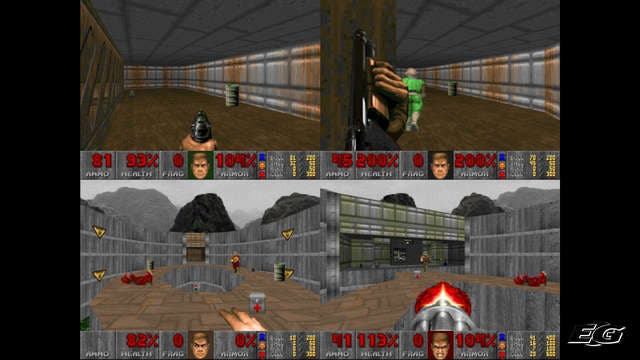
Whether you play four-player deathmatch or two-player co-op, the same problems seems to persist. Thankfully, each player has a connection quality meter, so filtering out particularly laggy offenders ought to be straightforward enough, but quick-match players beware. Happily, those that do get a decent online match going can also use the headset - particularly useful if you're playing a co-op match, while those who can't be bothered to deal with online issues can always settle for two player co-op split screen or four-player deathmatch split-screen. Post-pub heaven!
Perhaps one of the best things about Doom's release on XBLA is the thoughtful way Nerve has used the online leaderboard system to compare player's offline performance in each and every chapter of every episode. Measured in terms of the percentage of kills, items and secrets, you're given the opportunity to see how your friends did on every level, with an overall score awarded to give you an overall ranking. And with a total score given to your cumulative level scores, you can even work towards proving yourself as the world's best Doom player. Shame that the current friends leaderboard appears to rank in reverse order, and that post match score-boards don't list the player's name (very confusing) but you can't have everything.
In case there wasn't enough love expressed towards Doom in this review, let me say it again for emphasis - Doom is the rarest of retro games, in that you can enjoy it just as much as you did when it was first released. Better still, you can appreciate it with the benefit of 20-20 hindsight, and see not only how enormously influential it is, but how perfect its design was from the very beginning. Were Nerve to find a remedy to the online multiplayer niggles we'd be looking at a must-have 10, but for now, a nine sounds fine to me. Go treat yourself to a true gaming masterpiece.


